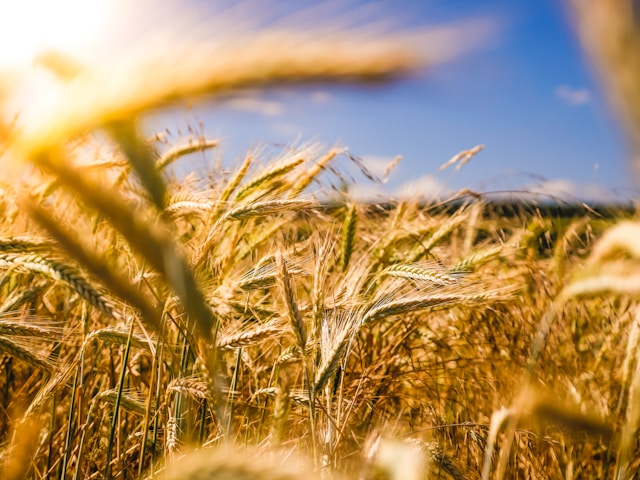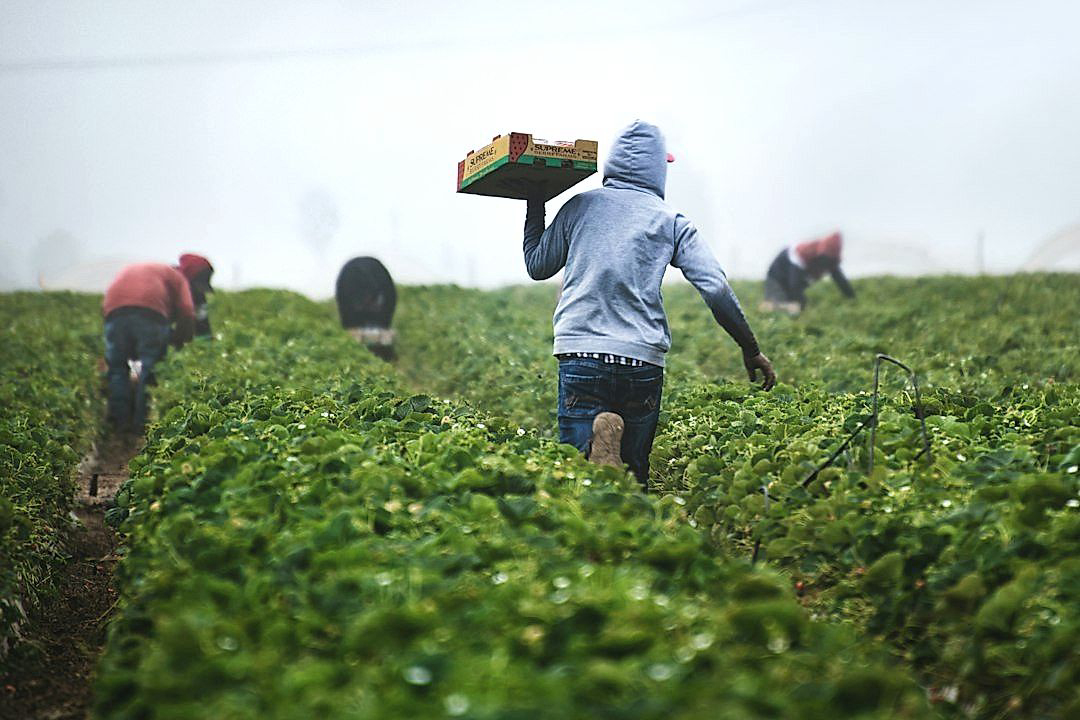The global fresh produce industry is experiencing unprecedented changes, particularly in the area of supply chain management.
These transformations are driven by fundamental shifts in consumer demands, global trade patterns, technology advancements, and sustainability needs.
Innovations in supply chain processes play a pivotal role in maintaining product quality and freshness, enhancing efficiency, reducing wastage, and driving customer satisfaction.
This blog focuses on the breakthroughs reshaping the fresh produce supply chain landscape.
It delves into the innovative practices being deployed to address some of the pressing challenges in this sector.
Furthermore, the strategies transforming the conventional methods of moving fresh commodities from farm to table will be explored in detail.
Supply Chain Innovations For Fresh Produce
1. Blockchain Technology for Traceability in Supply Chain
As the dynamics of competitive markets evolve, the need for increased transparency and reliability in the supply chain is becoming more apparent.
One of the most groundbreaking innovations to meet this need is the use of Blockchain Technology.
Blockchain Technology, at its core, is a decentralized and distributed digital ledger that records transactions across multiple computers in such a way that any involved record cannot be altered retroactively, without the alternation of all subsequent blocks.
This provides an unchanging, permanent record of all transactions, a feature that is incredibly useful for supply chain management.
A key application of Blockchain Technology for fresh produce is in the area of traceability.
In the event of a food safety incident, for instance, tracing the source of the affected product can be a time-consuming and convoluted process.
Blockchain simplifies the task, allowing every step from farm to fork to be tracked speedily and accurately.
By relying on the immutable nature of blockchain records, a given chain of custody for any produce item can be established, assuring the end consumer of its quality and origin.
Moreover, blockchain technology can eliminate the risk of fraud or misrepresentation in the supply chain.
For instance, the use of smart contracts within the blockchain can ensure that all parties adhere to agreed quality standards or transportation conditions.
This way, any deviation can be quickly detected, enhancing the reliability and integrity of the supply chain.
Another advantage of employing blockchain in the supply chain is the reduction of paperwork and associated administrative tasks, thus bringing down the operational costs.
Considering the perishable nature of fresh produce, any time saved in the supply chain can contribute remarkably to the quality and safety of the product.
Implementation of blockchain technology in the supply chain has a positive environmental impact as well.
As it promotes ethical sourcing and fair trade, it encourages sustainable agricultural practices.
Furthermore, the enhanced traceability provided by the blockchain aids in reducing food waste, as products can be more efficiently managed and distributed.
In the same vein, the integration of other technologies with blockchain holds promise for further enhancing supply chain efficiency.
For example, integrating Internet of Things (IoT) devices can provide live updates on the condition of the produce during transportation, thereby enabling immediate corrective action to prevent spoilage.
However, implementing blockchain technology in the supply chain also has its challenges.
It requires significant investment in technology infrastructure and training.
The success of a blockchain-based supply chain also relies on the willingness and ability of all parties in the chain to adapt to the new technology.
Moreover, while the decentralized nature of blockchain enhances security, it also introduces complexities in terms of legal and regulatory compliance.
The non-regulatory nature of blockchain is a challenge for industries and governments alike, and its adoption in supply chains would necessitate the development of appropriate regulatory frameworks.
In spite of these challenges, the innovation that blockchain technology brings to the supply chain of fresh produce is undeniable.
Its potential to transform the industry, improving both efficiency and consumer trust in the process, makes it a promising solution for the future of supply chain management
The integration of blockchain technology in the supply chain for fresh produce is a trend we foresee continuing.
While it may pose some upfront challenges and require a maturation period, the long-term gains in traceability, transparency, and efficiency are promising.
2. Autonomous Vehicles for Fresh Produce Transportation.
The advent of autonomous vehicles has presented an intriguing opportunity for the optimization of fresh produce transportation within the supply chain.
This invention aims to minimize interruptions, deliver goods more swiftly, and ensure the produce remains fresh throughout the transportation process.
Autonomous vehicles are designed with advanced technology that enables them to navigate and operate without the input of a human operator.
Technology plays a significant role in mitigating commonly faced issues in the transportation of fresh produce such as delays, spoilage and safety concerns.
Automation facilitates constant temperature control, which is critical in maintaining the quality of fresh produce during transit.
Moreover, autonomous vehicles have the potential to decrease the cost of transport and overcome human errors, notably in long-haul transportation.
The application of autonomous vehicles in supply chains not only maintains freshness but also meets the ever-growing demand for fresh produce in a fast-paced world.
These vehicles come equipped with various sensors, radar, GPS, and advanced computer systems that allow them to perceive their environment and move safely with little to no human interference.
Through this, autonomous vehicles are proving to be an effective and innovative solution for fresh produce transportation.
It is not uncommon for fresh produce to be sourced from a variety of geographic locations, posing a challenge for traditional transportation methods due to varying factors such as distance and road conditions.
However, autonomous vehicles can efficiently tackle these challenges, ensuring that consumers receive their fresh produce in the best possible condition.
Further, these vehicles can operate around the clock, overcoming issues of driver fatigue and associated road safety concerns.
Alongside these benefits, the implementation of autonomous vehicles in the fresh produce supply chain poses its own set of challenges.
These consist of regulatory issues, consumer trust, logistical hurdles and the question of wide-scale adaptation.
Despite these challenges, the potential payoff from the implementation of autonomous vehicles for transportation is considerable, offering a promising future for the fresh produce supply chain.
3. Advanced Refrigeration Systems for Quality Control
Quality control is a crucial aspect in the supply chain of fresh produce because it ensures that the produce stays fresh from the farm to the consumer.
The innovation of advanced refrigeration systems is offering transformative solutions to the inherent challenges in maintaining the quality of perishable goods during transit.
These modern systems come with improved and sophisticated features aimed at preserving the longevity of fresh produce by precisely controlling the temperature and humidity levels.
With conventional refrigeration systems, it was challenging to maintain consistent temperature levels, especially during long-distance transportation.
This issue often resulted in substantial food waste and loss of profits for companies involved in the supply of fresh produce.
However, advanced refrigeration systems have innovative components like digital temperature sensors and automated cooling modules.
These features eliminate the inconsistencies in temperature control that leads to spoiling of the fresh produce.
Also, these refrigeration systems are equipped with real-time data monitoring capabilities, giving suppliers the ability to track and monitor the storage conditions of their produce anytime and anywhere.
This instant access to critical information allows for timely intervention when necessary, reducing instances of spoilage and wastage.
Besides, today’s advanced refrigeration systems are more power-efficient than their predecessors.
This efficiency reduces operating costs, contributing to increased profitability for fresh produce suppliers and farmers.
Moreover, some advanced refrigeration systems come with solar power functionality, adding to their sustainability profile and making them a greener option for fresh produce storage and transportation.
Even in situations where there’s lack of continuous power supply, these refrigeration systems can maintain a constant temperature because of their high-tech insulation materials and power-efficient design.
This reliability essentially ensures that quality is maintained, giving both the suppliers and consumers confidence in the freshness of the produce.
Ultimately, the advent of advanced refrigeration systems is revolutionizing the supply chain for fresh produce, making it more efficient, sustainable, and profitable.
As the world continues to grapple with food waste and shortages, technology-driven innovations like advanced refrigeration systems will remain at the forefront of solutions to these challenges.
4. AI Optimized Inventory Management Systems
When we delve into the world of fresh produce supply chain, inventory management becomes a central concern.
The efficiency of tracking, storing, and distributing fresh produce from the point of harvest to the end consumer can drastically impact the quality, freshness, and ultimately, profitability of the produce industry.
The integration of Artificial Intelligence (AI) with inventory management systems is rapidly emerging as a game-changing innovation in the realm of supply chain for fresh produce.
Inventory management systems powered by AI can provide real-time updates on inventory levels, which helps to reduce waste, prevent stock shortages and eradicate ineffective manual counts.
Artificial Intelligence introduces predictive modeling capabilities in inventory management and thus can create accurate forecasts of demand, making the supply chain far more efficient.
The predictive power of AI can diagnose patterns and trends in sales data, resulting in highly productive demand forecasts.
These forecasts allow for a fine-tuned management of inventory levels, helping companies to optimize their order quantities, storage space utilization, and labor costs.
Besides, AI-optimized inventory systems have the capability to eliminate errors commonly associated with the human aspect of inventory tasks such as counts, data entry and order processing.
Moreover, AI can enable an automated reordering system.
When inventory levels drop low enough to trigger an automated alert, the system can automatically place orders, ensuring that stock is never out.
On the sustainability and waste reduction front, AI contributes significantly.
By having an accurate understanding of how much stock is needed and when it is needed, overstocking and subsequent waste of perishable fresh produce can be avoided.
The incorporation of AI with inventory management extends to tracking product freshness.
An AI system can monitor the shelf-life of products and prioritize the dispatch of items that are closer to their expiry, thereby reducing food waste.
Overall, the convergence of AI with inventory management systems is poised to revolutionize the supply chain in the fresh produce industry, rendering it more effective, reliable, and sustainable.
This innovative blend of technology and supply chain management introduces a level of sophistication and robustness that drives the future of the fresh produce industry.
5. Drone Delivery for Fresh Produce
Supply chains are continually updated with technological advancements, one of the most significant being the deployment of drones for fresh produce delivery.
This innovative method is changing how fresh produce finds its way from the farm to your dinner plate, aiming to uphold the quality and freshness of the produce during the final delivery steps.
The drone technology used for this purpose is specifically designed and built to maximize speed, efficiency, and safety while minimizing costs and environmental impact.
Drones can bypass the traffic and congestion usually encountered in traditional road-based delivery methods, making deliveries quicker and more efficient.
These high-tech flying machines are agile and flexible, capable of reaching remote or otherwise inaccessible areas, ensuring fresh produce can be delivered near or far.
They are also energy efficient, reducing reliance on fossil fuels and thereby contributing to a greener, more sustainable future.
Drone technology offers innovative solutions for fresh produce supply chains, significantly enhancing efficiency and sustainability.
In order to maintain the freshness and quality of the goods transported, drone delivery systems often incorporate advanced cooling technologies and packaging solutions to keep produce at optimal temperatures during transit.
These UAVs can also collect valuable data around delivery time, route efficiency, and produce condition upon delivery, all of which feed into an AI-driven decision-making system that continuously optimizes operations.
These insights can help in setting up more effective supply chain routes, deciding on the best timings for deliveries, and handling potential challenges like weather changes or package damages proactively.
However, the implementation of this technology does come with its own challenges and regulations.
Legal issues concerning airspace use, safety, and privacy must be carefully navigated, and required drone pilot certifications must be attained by operators, all of which can impact the scalability of drone delivery services.
Simultaneously, a strong network infrastructure is vital to support a fleet of delivery drones, ensuring they can safely navigate and communicate with one another and the control center.
While the technology is promising and provides numerous benefits, it’s vital to ensure that stringent safety and reliability standards are met and maintained.
Promoting public acceptance of drone delivery is also essential, as this is likely to have a significant impact on the adoption rate of this technology in the sector.
Overall, drone delivery for fresh produce is an exciting innovation within the supply chain management field and could potentially revolutionize how we receive our fresh produce in the near future, promoting greater efficiency, sustainability, and quality within the sector.
The Bottom Line
Fine-tuning the application of modern technologies like blockchain, autonomous vehicles, advanced refrigeration systems, AI-optimized inventory management, and drone delivery can significantly elevate the level of efficiency, reliability, and quality in the food supply chain industry.
These innovative solutions not only provide real-time traceability and transparency but also help in meeting market demand, ensuring food safety, minimizing waste, and reducing environmental impact.
They are propelling the sector towards a future with smarter, faster, and more sustainable operations.




